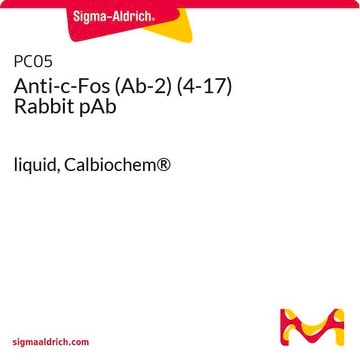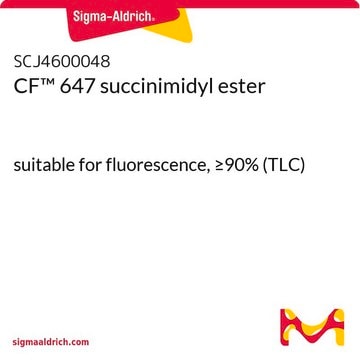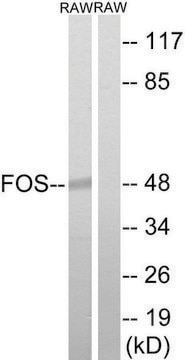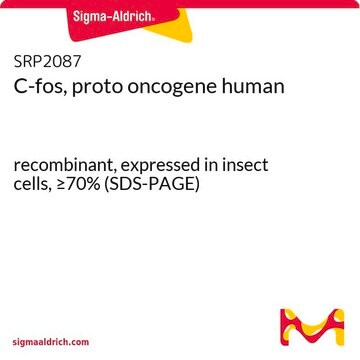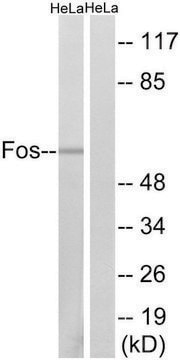Kluczowe dokumenty
F7799
Anti-c-Fos Antibody
rabbit polyclonal
Synonim(y):
C-Fos Antibody, C-Fos Antibody - Anti-c-Fos antibody produced in rabbit
Wybierz wielkość
779,00 zł
Wybierz wielkość
About This Item
779,00 zł
Polecane produkty
Nazwa produktu
Anti-c-Fos antibody produced in rabbit, IgG fraction of antiserum, buffered aqueous solution
pochodzenie biologiczne
rabbit
Poziom jakości
białko sprzężone
unconjugated
forma przeciwciała
IgG fraction of antiserum
rodzaj przeciwciała
primary antibodies
klon
polyclonal
Formularz
buffered aqueous solution
masa cząsteczkowa
antigen 50-60 kDa
reaktywność gatunkowa
human
opakowanie
antibody small pack of 25 μL
metody
immunohistochemistry (formalin-fixed, paraffin-embedded sections): 1:5,000 using human colorectal carcinoma tissue
western blot: 1:1,000 using nuclear extract of a phorbol ester-treated human A431 cells or nuclear extract of human A431 cells
numer dostępu UniProt
Warunki transportu
dry ice
temp. przechowywania
−20°C
docelowa modyfikacja potranslacyjna
unmodified
informacje o genach
human ... FOS(2353)
Opis ogólny
Immunogen
Zastosowanie
Anti-c-Fos antibody produced in rabbit has been used in immunoassays to determine the c-fos immunoreactivity in spinal cord sections. It has been used in Immunohistochemistry.[1]
It may be used as a probe to determine the presence and roles of c-Fos in a wide variety of cell processes including cell proliferation and differentiation, and responses to cell damage or stress.
Działania biochem./fizjol.
Postać fizyczna
Oświadczenie o zrzeczeniu się odpowiedzialności
Nie możesz znaleźć właściwego produktu?
Wypróbuj nasz Narzędzie selektora produktów.
polecane
Kod klasy składowania
10 - Combustible liquids
Klasa zagrożenia wodnego (WGK)
WGK 3
Temperatura zapłonu (°F)
Not applicable
Temperatura zapłonu (°C)
Not applicable
Wybierz jedną z najnowszych wersji:
Certyfikaty analizy (CoA)
Nie widzisz odpowiedniej wersji?
Jeśli potrzebujesz konkretnej wersji, możesz wyszukać konkretny certyfikat według numeru partii lub serii.
Masz już ten produkt?
Dokumenty związane z niedawno zakupionymi produktami zostały zamieszczone w Bibliotece dokumentów.
Klienci oglądali również te produkty
Active Filters
Nasz zespół naukowców ma doświadczenie we wszystkich obszarach badań, w tym w naukach przyrodniczych, materiałoznawstwie, syntezie chemicznej, chromatografii, analityce i wielu innych dziedzinach.
Skontaktuj się z zespołem ds. pomocy technicznej


